Egill Sæbjörnsson
14 Oct 2023 - 25 Feb 2024
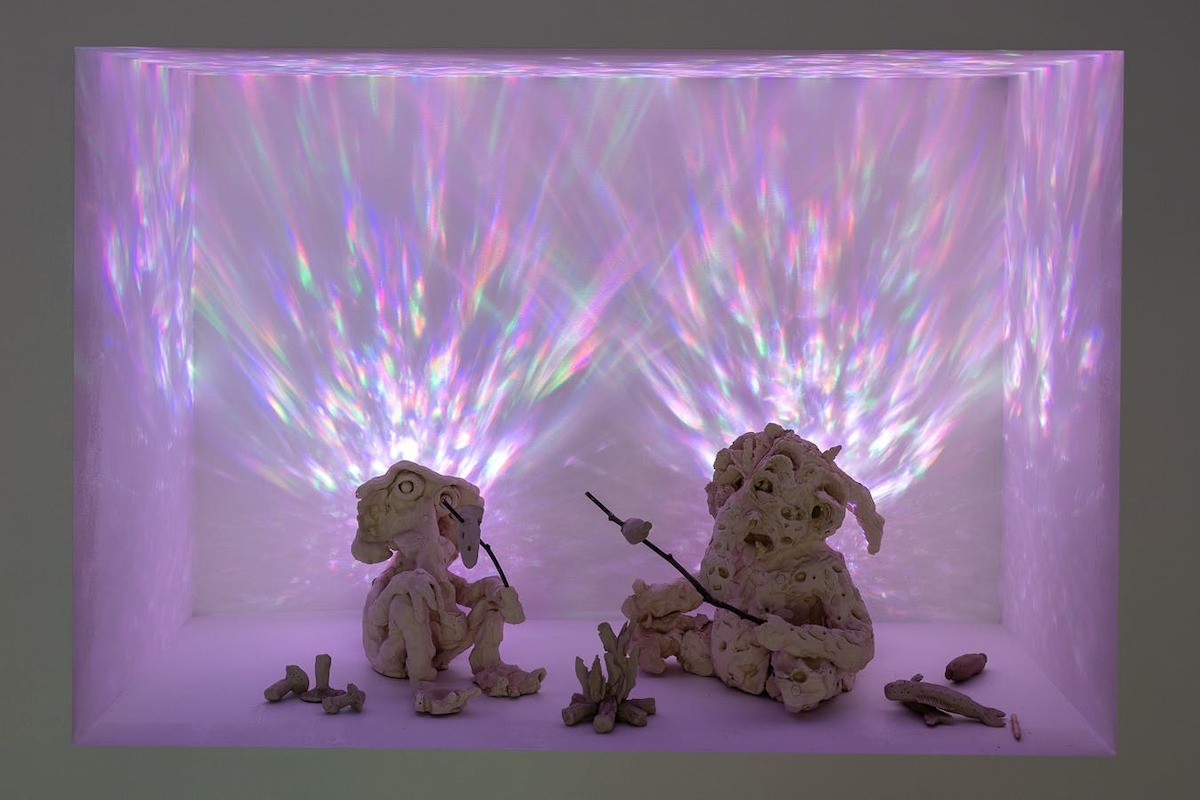
Egill Sæbjörnsson and Infinite Friends of the Universe, exhibition view at the National Gallery of Iceland, Reykjavik, 2023, photo: Sigurður Gunnarsson

Egill Sæbjörnsson and Infinite Friends of the Universe, exhibition view at the National Gallery of Iceland, Reykjavik, 2023, photo: Sigurður Gunnarsson

Egill Sæbjörnsson and Infinite Friends of the Universe, exhibition view at the National Gallery of Iceland, Reykjavik, 2023, photo: Sigurður Gunnarsson

Egill Sæbjörnsson and Infinite Friends of the Universe, exhibition view at the National Gallery of Iceland, Reykjavik, 2023, photo: Sigurður Gunnarsson
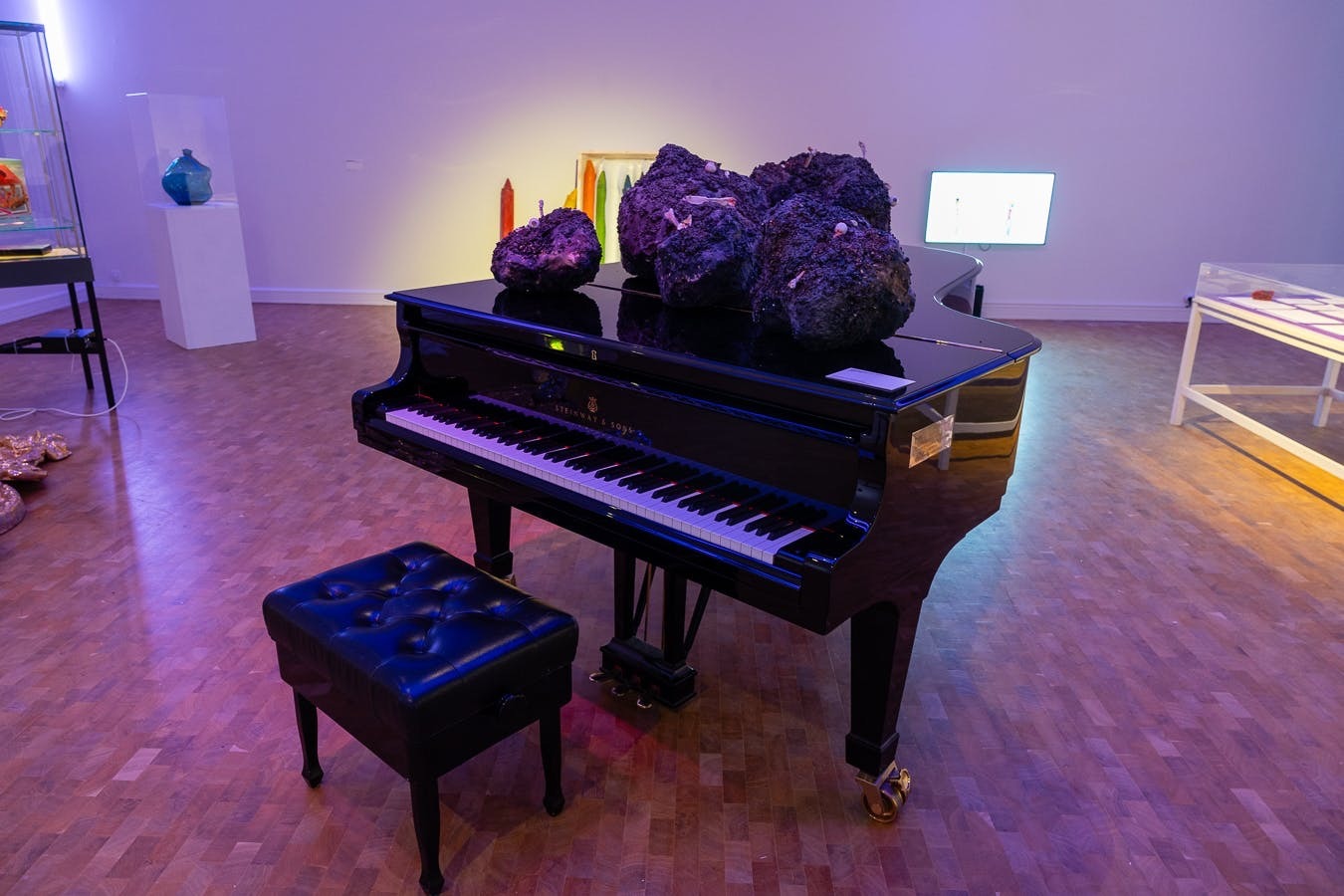
Egill Sæbjörnsson and Infinite Friends of the Universe, exhibition view at the National Gallery of Iceland, Reykjavik, 2023, photo: Sigurður Gunnarsson
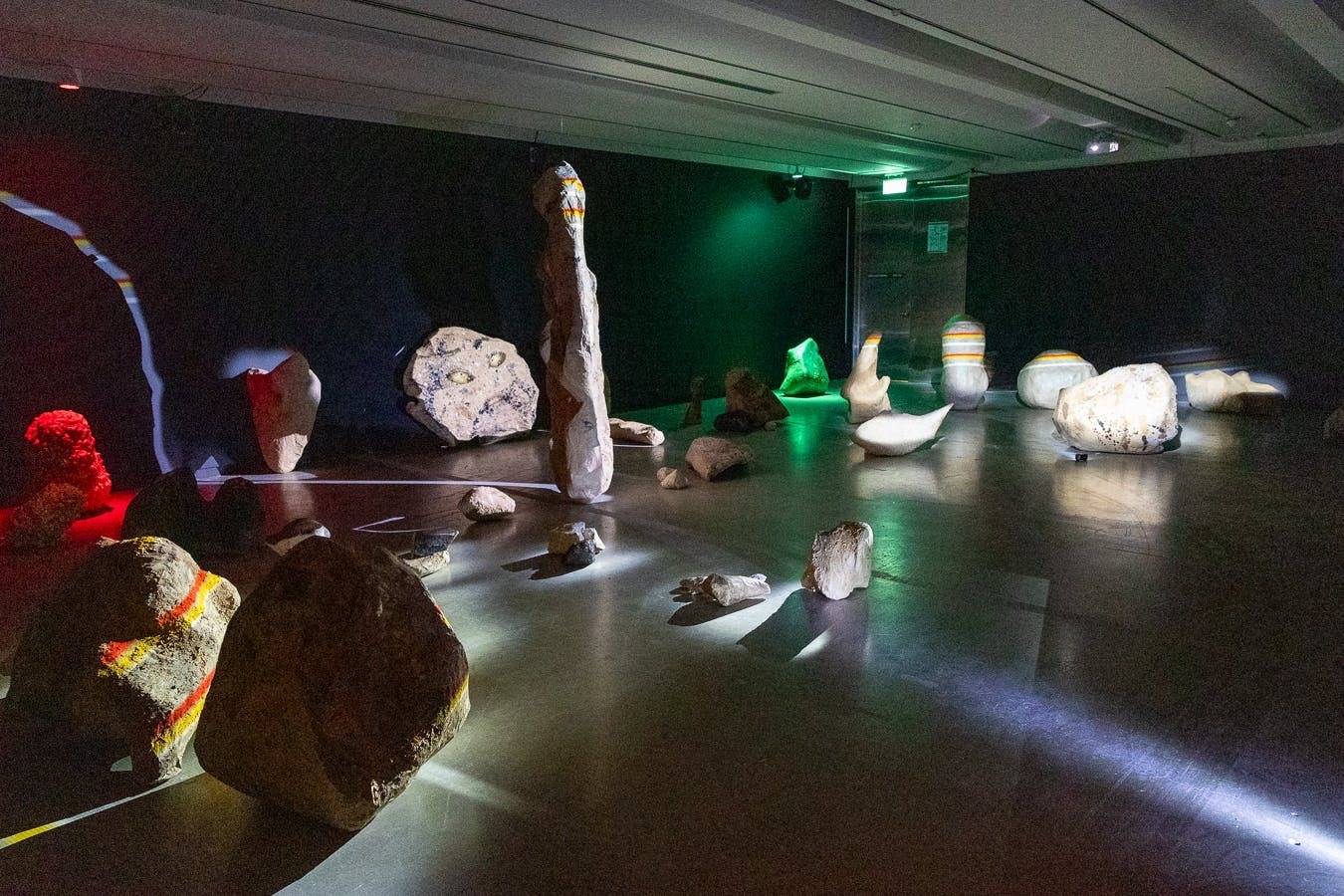
Egill Sæbjörnsson and Infinite Friends of the Universe, exhibition view at the National Gallery of Iceland, Reykjavik, 2023, photo: Sigurður Gunnarsson
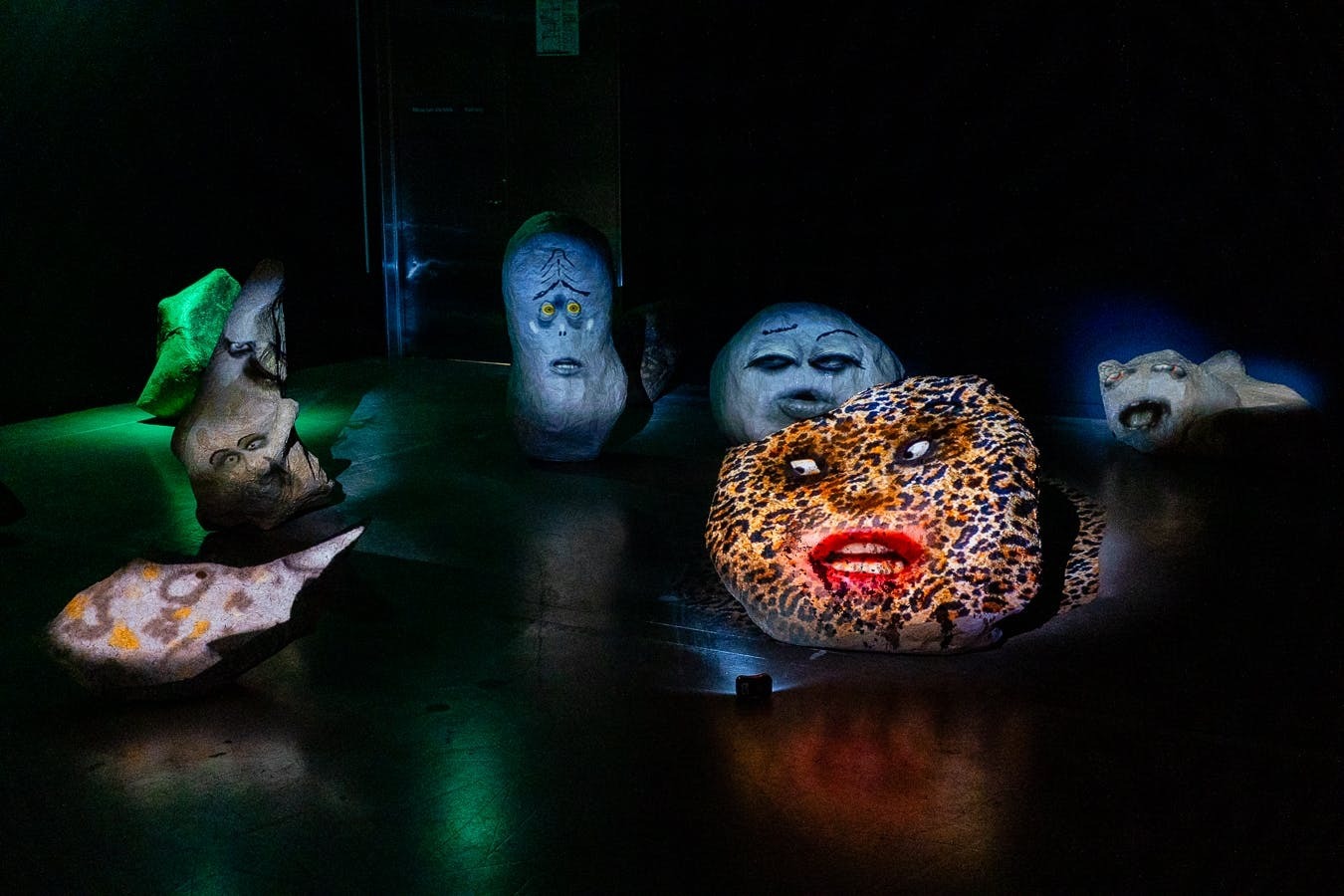
Egill Sæbjörnsson and Infinite Friends of the Universe, exhibition view at the National Gallery of Iceland, Reykjavik, 2023, photo: Sigurður Gunnarsson

Egill Sæbjörnsson and Infinite Friends of the Universe, exhibition view at the National Gallery of Iceland, Reykjavik, 2023, photo: Sigurður Gunnarsson
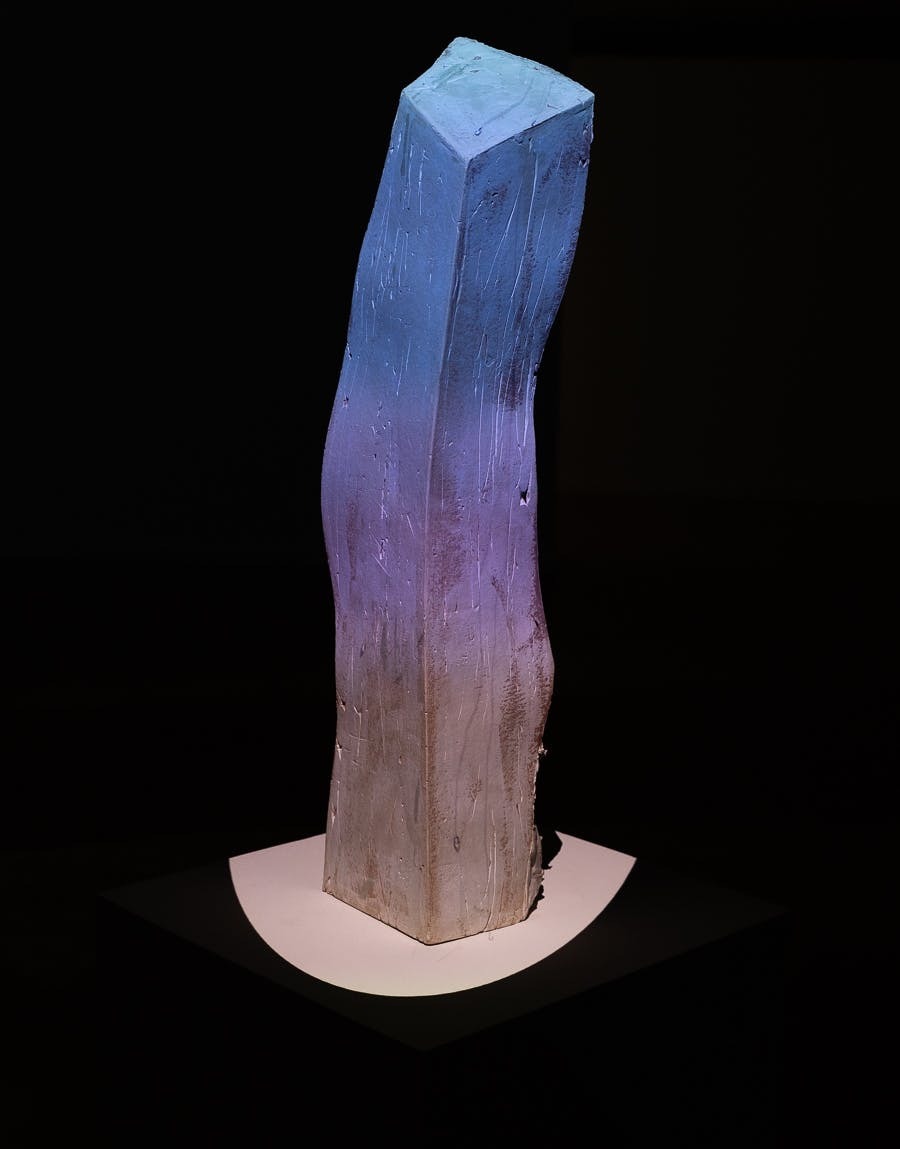
Egill Sæbjörnsson and Infinite Friends of the Universe, exhibition view at the National Gallery of Iceland, Reykjavik, 2023, photo: Sigurður Gunnarsson
Egill Sæbjörnsson and Infinite Friends of the Universe
In the creations of Egill Sæbjörnsson, the joy of play is all-encompassing. The interplay of the material world and universal consciousness spring forth like delightful fungi in the form of music, installations, living sculptures, and very real imaginary travel companions. In this exhibition, Egill invites an infinite number of friends to join in an instance of togetherness in the endless playroom of art.
In room 1 you can see Ūgh and Bõögâr that have been a distinctive part of Egill’s creative journey since 2008. Working with trolls started as a joke or a kind of game for Egill and he initially hid the works from gallerists and curators. It was seeing Tove Jansson’s exhibition in Ateneum in Helsinki in 2015, and realizing that the Moomins and Jansson´s world-making were legitimate art, that made him decide it was time to share his trolls with the world. The trolls´ inaugural appearance was when they represented Iceland in a solo showcase at The Icelandic Pavilion during the 57th Biennale dell’Arte in Venice.
In this exhibit, their first in Iceland, they unveil their very own chatbot, crafted in collaboration with Miðeind, a pioneer in integrating the Icelandic language into the digital sphere. We see their new smartphones and meet Gubb, their older sister, portrayed by Berlin-based Canadian musician Peaches.
The trolls also interact with works of beloved Icelandic masters Ásgrímur Jónsson, Muggur, Finnur Jónsson and Kjarval as well as works of Tove Jansson from Finland and Tori Wrånes, a norwegian artist working with trolls. Last but not least Ūgh and Bõögâr meet Icelandic contemporary artists Steingrímur Eyfjörð and Gabríela Friðriksdóttir who also work with trolls, entities or characters in their works. Egill does not wish to own the idea of trolls and it is important to him to share it with others. For the first time we also see the prototypes of Ūgh and Bõögâr, that Egill created through play with his friend the Chilean artist Diego Fernandez in 2013. Their version of the trolls were called Fög and Yolk and as you can see are still very much alive.
The work The Egg or The Hen, Us or Them, that you can see in room 2, consists of 49 objects, made of paper maché, glue, sand, sawdust and paint, pretending to be stones. Superim - posed on these objects, is an array of animated videos contributing to different layers of possible interpretation. In sequential endeavours, Egill wrote the book Stones Accord - ing to Egill Sæbjörnsson, (2012) and did lecture performances called From Magma to Mankind (2020) and Object Species (2021) that are available online through the QR code you see below this text. There he poses questions such as: “Are humans stones that walk and talk,” and “Is Art a species that coexists with humans?”.
In room 3 we see three sculptures made of plaster that may look to some of us like the typical, “macho sculptures from the 50’s, 80’s or the 90’s” as Egill calls them. Typical of Egill’s humour, this perceived feature is just an added layer to something completely different. At the other end of the room is a com - puter with an AI application that continuously self-generates digital images that are projected onto the surface of the sculptures to call into question the dual existence of the physical and the virtual in the modern world. In this work Egill wishes to reshape our understanding of art’s nature from being static and passive to being vivid and active. The traditional division between living and non-living structures dissolves and the role of art is elevated from submissive and inert to pivotal.
Curated by Arnbjörg María Danielsen
In the creations of Egill Sæbjörnsson, the joy of play is all-encompassing. The interplay of the material world and universal consciousness spring forth like delightful fungi in the form of music, installations, living sculptures, and very real imaginary travel companions. In this exhibition, Egill invites an infinite number of friends to join in an instance of togetherness in the endless playroom of art.
In room 1 you can see Ūgh and Bõögâr that have been a distinctive part of Egill’s creative journey since 2008. Working with trolls started as a joke or a kind of game for Egill and he initially hid the works from gallerists and curators. It was seeing Tove Jansson’s exhibition in Ateneum in Helsinki in 2015, and realizing that the Moomins and Jansson´s world-making were legitimate art, that made him decide it was time to share his trolls with the world. The trolls´ inaugural appearance was when they represented Iceland in a solo showcase at The Icelandic Pavilion during the 57th Biennale dell’Arte in Venice.
In this exhibit, their first in Iceland, they unveil their very own chatbot, crafted in collaboration with Miðeind, a pioneer in integrating the Icelandic language into the digital sphere. We see their new smartphones and meet Gubb, their older sister, portrayed by Berlin-based Canadian musician Peaches.
The trolls also interact with works of beloved Icelandic masters Ásgrímur Jónsson, Muggur, Finnur Jónsson and Kjarval as well as works of Tove Jansson from Finland and Tori Wrånes, a norwegian artist working with trolls. Last but not least Ūgh and Bõögâr meet Icelandic contemporary artists Steingrímur Eyfjörð and Gabríela Friðriksdóttir who also work with trolls, entities or characters in their works. Egill does not wish to own the idea of trolls and it is important to him to share it with others. For the first time we also see the prototypes of Ūgh and Bõögâr, that Egill created through play with his friend the Chilean artist Diego Fernandez in 2013. Their version of the trolls were called Fög and Yolk and as you can see are still very much alive.
The work The Egg or The Hen, Us or Them, that you can see in room 2, consists of 49 objects, made of paper maché, glue, sand, sawdust and paint, pretending to be stones. Superim - posed on these objects, is an array of animated videos contributing to different layers of possible interpretation. In sequential endeavours, Egill wrote the book Stones Accord - ing to Egill Sæbjörnsson, (2012) and did lecture performances called From Magma to Mankind (2020) and Object Species (2021) that are available online through the QR code you see below this text. There he poses questions such as: “Are humans stones that walk and talk,” and “Is Art a species that coexists with humans?”.
In room 3 we see three sculptures made of plaster that may look to some of us like the typical, “macho sculptures from the 50’s, 80’s or the 90’s” as Egill calls them. Typical of Egill’s humour, this perceived feature is just an added layer to something completely different. At the other end of the room is a com - puter with an AI application that continuously self-generates digital images that are projected onto the surface of the sculptures to call into question the dual existence of the physical and the virtual in the modern world. In this work Egill wishes to reshape our understanding of art’s nature from being static and passive to being vivid and active. The traditional division between living and non-living structures dissolves and the role of art is elevated from submissive and inert to pivotal.
Curated by Arnbjörg María Danielsen
